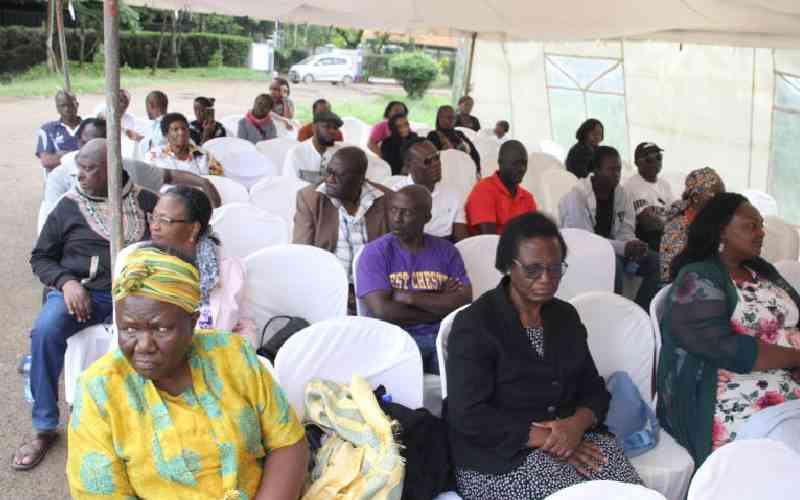
The novel coronavirus has caused a global pandemic and instituted unparalleled changes to the lives of literally every person, sector and nation. It is a fact that Covid-19 caught the world unprepared for the kind of life and lifestyles lived now and to be the new normal in future.
This indiscernible monster has shaken the very core of economies, shattering plans, key functions and causing frustrations and losses of untold magnitude. Unlike previous flues, this one spreads very fast and is not restricting itself to regions of origin. Probably, this is responsible for the ambush nations felt.
The health sector in the country is trying its best to manage the spread and treat those infected by virus.
Education, which is key in national development, has taken a beating. All schools, colleges and universities had few days within which to close. Everybody went home knowing that in a month or so, all would be back to normal. So, none would have seen the need to make immediate plans for continuation of learning through alternative means. Well, we all know that the reality is now different. Currently, as countries in the west are working on modalities of returning back to normal operations, it is not clear when Kenya will do the same.
As Kenyans look forward to good news on back to school, there is mounting disquiet about the strategies the education sector has put in place to minimise loss. The rising anxiety was clearly expressed by the parliamentary Committee on Education during its engagement with the Ministry of Education chiefs. The question that arises therefore is, what more can be done now and beyond the pandemic to make remote learning an attainable reality?
Let’s face it, formal learning as we have all known it is no longer happening. For this reason, there are alternatives taken in an effort to ensure learning continues. One of this is the use of the electronic and digital means. E-learning has become a quick default with reason. Probably, the last census provided promising data. Probably, with a proactive ICT ministry, more ‘widespread’ internet connectivity, access to computer technologies such as smart phones, laptops, note books, iPad, desktops, smart televisions, broad radio wave coverage and computer literate populace is possible. However, all doesn’t seem to be well. There are complaints from stakeholders that learning is not taking place and that a large populace is unable to be part of this great innovation.
Education must provide for all, ensure unprejudiced access and adherence to quality learning. The question of our preparedness to use this means is valid in view of its highly technical nature and rush to implement it. E-learning is effective with close guidance by a qualified teacher or instructor. Successful e-learning happens when there is sufficient preparedness of the teacher, materials, learners, the learning environment, infrastructure and supportive administrative policies and structures.
Its implementation within a short time is plausible. But the elephant in the house needs to be addressed. Some pertinent questions need to be asked and answers sought. Why is it not working for us? Is learning really taking place through e-learning? How much of it? And by what percentage of the schooling population? What other options do we have for ensuring learning is accessed remotely by all now and after the pandemic? Answers to these questions are important going forward. We need to learn how to be effective in adopting to and adapting new technologies; it is the future of learning.
While we are at this, I wish to remind us of other options for remote learning. But first, let us identify some realities about us. First, you may agree with me or not, our education system spins around examinations hence the concern about when they will happen. Secondly, we do not yet know how soon schools will open.
Third, there are regional technological capacity disparities. Also, this is not the first and may not be the last time that institution based face-to-face learning is interrupted. This period has presented opportunities for consideration of strategies that are not just stop-gap in nature, but long-term and we should not let these opportunities slip through our fingers. The education enterprise needs to grow into a learning organisation by facilitating collective learning in order to constantly improve the capacity to respond to a dynamic environment such us the current one.
This type of learning pervades all organisational activities, structures, processes, climate and values, leading to an enhanced ability to react quickly to opportunities and threats. Organisational learning provides a foundation for solutions and strategies that offer sustainability, affordability, equitable access, quality, effectiveness and can be efficiently managed.
As we learn from the current experiences with e-learning and hope to improve it, there are other existing opportunities and strengths that can be visited to make remote learning a reality.
One such opportunity is to consider distance learning self-instructional print modules. Mundane as it may be, they offer great potential and make up for limitations of state-of-the-art means. Self-instructional print materials when professionally developed, offer high levels of flexibility, which is needed during the stay at home periods in varying environments.
They provide a permanent source of reference, learning is self-paced, and the flexibility of use can allow parents of more than one student to be able to support each child. Note that a family may not have enough smart gadgets for all children to sufficiently learn.
Stay informed. Subscribe to our newsletter
The re-usability quotient is high therefore, providing value for money. With Kenya Institute of Curriculum Development (KICD) developed modules, quality and standardised minimum knowledge is assured.
Access to uncensored content is minimised. I believe that there is sufficient structural, organisational and professional capacity to realise this with more ease. KICD, I recall, did this for in-service primary teachers. This capacity in KICD is an asset and opportunity and the institute should rise up to the occasion on this.
An additional pro is teachers’ familiarity with this format so its uptake is expected to be high. The silent resistance that comes with the unfamiliar should be minimal. This mode of learning offers possibilities of integration into the traditional learning processes when schools resume. When and if this happens, teachers will need to make minimal adjustments to their practice and have more time on competencies that require their direct intervention as the students learn to take charge and responsibility of their learning. Traditional dependence on teachers for all learning to happen is reduced, and learners begin to develop higher order learning competencies that we have always wished for.
With current e-learning challenges we have now come to appreciate the teachers more than before. It is one thing to make knowledge available to a learner, but another thing altogether to ensure that targeted and meaningful learning occurs. Whatever modes of learning is adopted, the teacher’s role is fundamental to effective and efficient learning. Distance learning requires change in teachers’ role, not their absence.
Caught flatfooted
Tertiary institutions too, were caught flatfooted with most now learning to conduct virtual meetings and urging lecturers to prepare to teach through various e-learning portals. The hens have come home to roost as most faculty lack the competency to make this change. There is need for capacity building, provision of supportive structures and policies that will ensure that this becomes the last time students cannot learn simply because they are away from campus.
With insufficient facilities and lecturers higher education didn’t need Covid-19 to realise that we ought to have gone electronic yesterday. We have the opportunity to learn in the true sense of the word and make sustainable changes in the way we do our business in provision of education. In doing so, let us maximise on the various means of remote learning that are adoptable to varying environments as we make remote learning through different channels available so that no one is left behind.
Finally, the public-school academic calendar has traditionally started in January and ended in November-December. Could there be an opportunity here for harmonising school academic year with fiscal year and bringing it closer to tertiary education calendar?
Prof Abenga, an expert in Educational Technology, teaches at Masinde Muliro University of Science and Technology.
 The Standard Group Plc is a
multi-media organization with investments in media platforms spanning newspaper
print operations, television, radio broadcasting, digital and online services. The
Standard Group is recognized as a leading multi-media house in Kenya with a key
influence in matters of national and international interest.
The Standard Group Plc is a
multi-media organization with investments in media platforms spanning newspaper
print operations, television, radio broadcasting, digital and online services. The
Standard Group is recognized as a leading multi-media house in Kenya with a key
influence in matters of national and international interest.
 The Standard Group Plc is a
multi-media organization with investments in media platforms spanning newspaper
print operations, television, radio broadcasting, digital and online services. The
Standard Group is recognized as a leading multi-media house in Kenya with a key
influence in matters of national and international interest.
The Standard Group Plc is a
multi-media organization with investments in media platforms spanning newspaper
print operations, television, radio broadcasting, digital and online services. The
Standard Group is recognized as a leading multi-media house in Kenya with a key
influence in matters of national and international interest.










